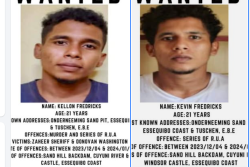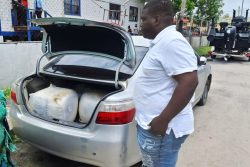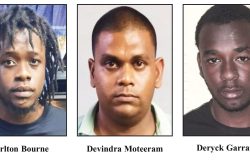(Barbados Nation) A Barbados-Venezuela illegal drug connection is ferrying cocaine to the island, dropping narcotics at pre-arranged spots at sea to be picked up by Bajan traffickers.
Much of the cocaine smuggled into Barbados is earmarked for trans-shipment to North America and Europe but the rest is consumed locally by addicts and other users, creating the demand for more and more drugs.
That picture was sketched by the United States in its latest International Narcotics Control Strategy report, which stated that marijuana was the only drug being cultivated in Barbados and there weren’t any laboratories to produce cocaine.
Barbados’ anti-drug police squad, which works closely with the Coast Guard, the air wing of the Regional Security System (RSS) and the Police Force’s marine unit, last year seized more than nine tons of marijuana, almost seven tons of which were taken at sea; seven kilos of cocaine and 16 371 ganga plants.
The report said: “Recent trends in cocaine smuggling suggest that the Venezuelan drug trafficking rings have fostered relationships with local Barbados-based organizations to facilitate trafficking.
“Meetings between these organizations have involved arranging for drops of cocaine by foreign vessels at predestined global positioning system coordinates for retrieval by local vessels at sea.”
A problem facing Barbados in its anti-drug campaign is its coastal radar system’s inability to cover the entire country. Officially called the “inter-coastal surveillance system radar” it was designed to assist in drug interdiction but wasn’t “fully operational,” thus leaving a gap in its coverage.
“The system has yet to achieve 360-degree coverage of the island by linking four strategically-placed towers together,” the report explained.The Government was now seeking funds to complete the coverage. In the meantime, RSS aircraft, the police marine unit and the Coast Guard remain key elements of the Drug Squad’s arsenal “to monitor the illegal movement of narcotics by sea.”
The report also stated that in 2010:
• Cocaine was seized in liquid, powdered and crystalline forms in Barbados.
• “For the first time, no designer drugs were seen.”
• Some 641 people were arrested on drug charges and hauled before the courts. Nine “major” drug traffickers were prosecuted.
• Drug abuse and resistance education programmes reached into schools across the country with police officers from the Drug Squad and the community relations unit conducting lectures.
They also went into churches, the prison, social services facilities and private sector centres because of Bajans’ “high level of cannabis consumption.”
• Four drug rehabilitation clinics, one of which targeted the youth, were in operation.•
The police Drug Squad concentrated much of its efforts on major drug dealers while keeping its eyes out for low level drug dealers and street “mules.”
• As a member of the chain of Eastern Caribbean island-nations, Barbados used the RSS in its anti-drug strategy and cooperates fully with United States and other international agencies in the fight against illegal drugs.
“The regional area continues to harbour abundant transshipment points to illicit narcotics primarily from Venezuela destined for North American, European and Caribbean domestic markets,” the report pointed out.
“The drugs transit mostly by sea in ‘go-fast boats, larger fishing vessels, yachts and freighters in a variety of scenarios tailored to the geography of the region.
“Drug-related crime rates are increasing as more drugs are consumed in the region, and local consumption of drugs is on the rise. Cultivation of marijuana is ongoing in the region, primarily for local consumption.”








